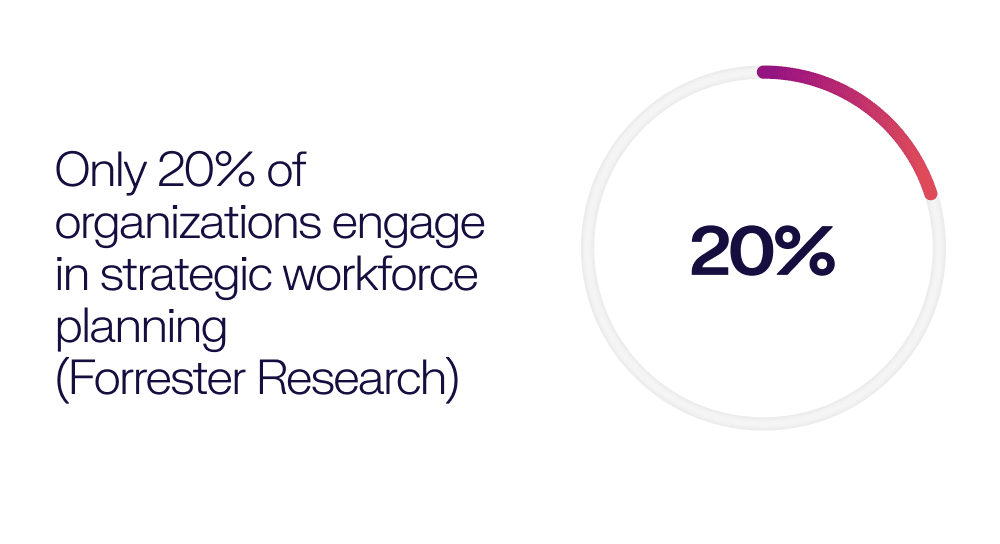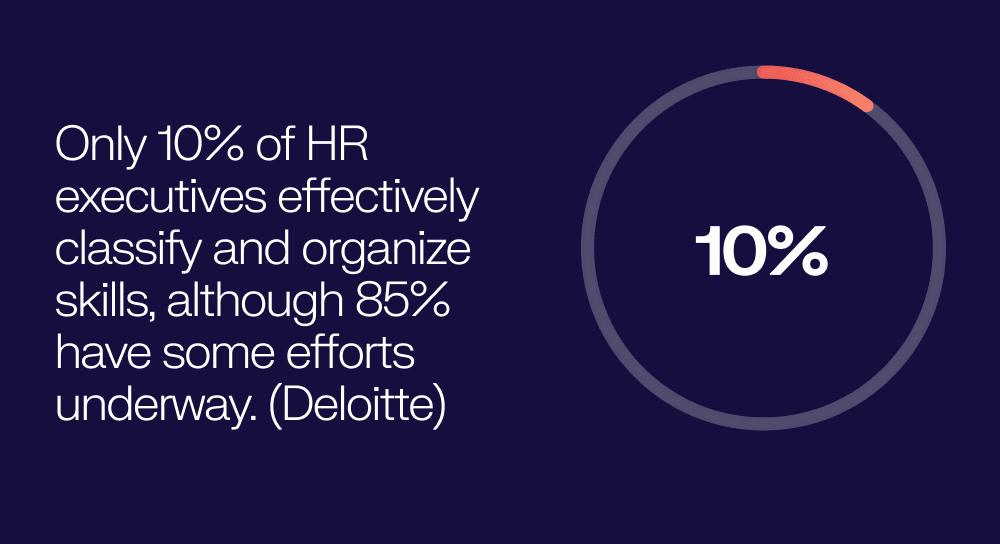Better Workforce Planning? You Need A Skills-Based Talent Strategy
Workforce planning is difficult. This is the process HR or People teams go through to work out what people and skills will be needed in the future, in order to determine the right talent strategy for today. Will you need to train your existing employees, increase the size of your TA team to hire more and more people, pivot in terms of the types of role you hire for, or something else?

The plan defines when and how many employees should be hired, upskilled or redeployed, and when and how these employees should work. Of course, people are unique and ever-changing, so workforce planning needs to be dynamic.
But most companies don’t even have a clear picture of what they have today, never mind the skills they might need tomorrow. The basis of good workforce planning is workforce insights – understanding what you have. The starting point is a taxonomy and ontology around skills.
Effective workforce planning requires large-scale transformation to a skill-based approach to talent management.
1. A true understanding of skills 📋
It all starts with a system for defining, categorizing and connecting skills: the taxonomy and ontology of skills.
Some companies may have this already, but most we speak to are in the process of building something, or have a very fragmented approach. Their skills data lives in silos; HR data is commonly unstructured, subjective… and as messy as the real-life humans it represents.

Data about candidates lives in an Applicant Tracking System; employee data may be inside various LMS and training platforms and an HRIS; potential candidates, silver medallists and alumni may sit in a Talent CRM… or may be languishing in a spreadsheet on a recruiter’s desktop.
Pulling these data sets together is costly, and time consuming, and often the insights are out of date before they can bring you any real value.
Organizing skills data isn’t easy, but there is technology out there to help. The right solution – usually involving a knowledge graph – will help you ingest and connect many data points from various sources, and then integrate with (and expand on) existing skills ontologies.
You get a single source of truth with standardized and enriched data, that stays up to date as people’s skills evolve, and the ability to extract or infer skills from other pieces of information. You can also group skills into relevant clusters, and add that all-important context: seniority, proficiency, relevance to industry.
Technology can apply some automation, some data validation and inference models in order to fill in the gaps.
A complete taxonomy and ontology will give you an up-to-date map of skills present in the organization. You can then create a dynamic job architecture based on the skills map.
2. Finding actionable insights 💡
Once you have a skills taxonomy and job architecture for your organization, you can assess skill availability internally and within the broader market. Intelligent insights into workforce composition, as well as market insights, will help you make better decisions around talent.
Some of the additional insights you can gather might include someone’s likelihood to move, or to engage with a job posting.
Your data should also help you prioritize vacancies, and see where the market is heading.
Discover which are the most critical skills, slice your data with filters (like geography or department), and apply AI to the data to make inferences and get insights, such as:
- Which skills are usually paired with which other skills
- Adjacent skills
- Unique pairings of skills
- The number of people with skill vs. needs in future workforce plan
You’ll want to assess the evolution of skills availability on the market, as well as with competitors.
3. Make better plans and decisions 😍
Close skills gaps:
Organizations need to understand the skills delta between the current skills map and the future composition of skills needed to achieve business goals. Draft skills gap delta, identify critical skills and help with a range of concrete actions to reduce the gap.

Carry out successful Mergers/Acquisitions:
If you are acquiring one or multiple targets, you need tools to assess talent risk and show the skills gap in various integration scenarios. With the right workforce insights, you can figure out your talent integration plan at scale: ensure that job titles are rationalized, for example.
Plan how to rescale the talent of the acquired company to match the scale of the buyer, and fill open roles from within your aggregated talent pool.
Rightsizing:
Whether you are in a phase of expansion or contraction (hiring or downsizing will involve different workforce planning adjustments), you can figure out how to make the best talent decisions, including candidate analysis (where the hires of the future are likely to come from, based on the skills data we have on current hires) and internal talent mobility (identify, develop and redeploy people with the potential to succeed in a different role, based on their skills).
Transformation:
With the right workforce insights, you can support your talent with career progression, so that the answer is not always to find a new role elsewhere. Boost retention and engagement with initiatives that support internal mobility, and get smarter with succession planning.
Getting all of this right will ensure that you can hold on to talent and save on replacing people, especially when those people have the skills you truly need. Always have the right human resources to meet your business goals.

Conclusion
With a skills-based approach to talent management, you can:
- Create transparency and reduce bias
- De-risk talent decisions (with better intelligence)
- Leverage a single source of truth and a unified language
- Empower employees with growth plans and career paths based on their individual skills
- Discover untapped talent, and insight that you just can’t find anywhere else
You also have the important building blocks for better workforce insights and smarter workforce planning.